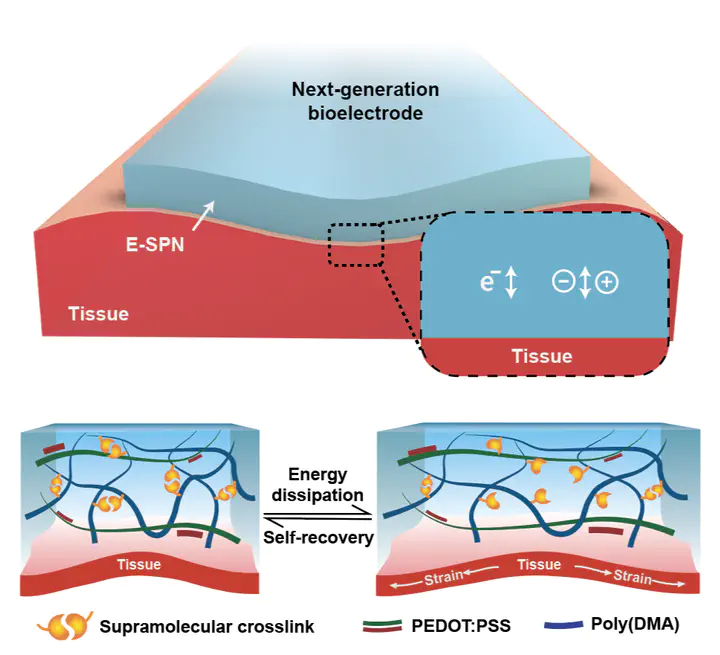 Image credit: Wiley
Image credit: Wiley摘要
Addressing the mechanical mismatch between biological tissue and traditional electronic materials remains a big challenge in bioelectronics. While rigidity of such materials limits biocompatibility, supramolecular polymer networks can harmoniously interface with biological tissues as they are soft, wet and stretchable. Here we introduce an electrically conductive supramolecular polymer network that simultaneously exhibits both electronic and ionic conductivity while maintaining tissue-mimetic mechanical properties, providing an ideal electronic interface with the human body. Rational design of an ultrahigh affinity host-guest ternary complex led to binding affinities (> 1013 M-2) of over an order of magnitude greater than previous reports. Embedding these complexes as dynamic crosslinks, coupled with in-situ synthesis of a conducting polymer, resulted in electrically conductive supramolecular polymer networks with tissue-mimetic Youngs moduli (< 5kPa), high stretchability (> 500%), rapid self-recovery and high water content (> 84%). Achieving such properties enabled fabrication of intrinsically-stretchable stand-alone bioelectronics, capable of accurately monitoring electromyography signals, free from any rigid materials.